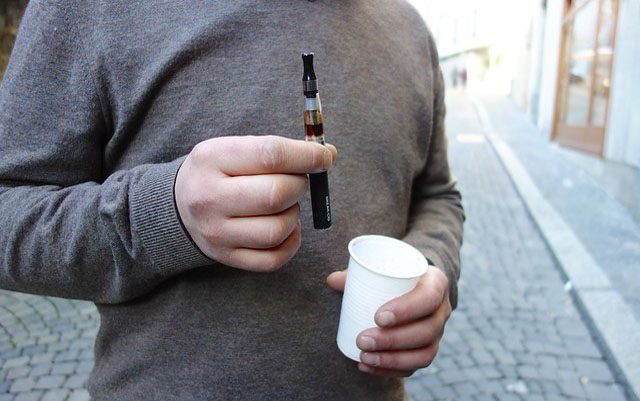Last Friday, two months after the national hunt for the cause of the vaping illness epidemic began in earnest, there were two dramatic developments that move us giant steps closer to identifying a culprit.
- NBC News reported that it bought bootleg marijuana vapes that were tainted with a chemical that can produce cyanide at high temperatures.
- The Centers for Disease Control for the first time said that among deaths and illnesses from vaping, THC products “were the most prominent link.”
The NBC News segment aired Friday morning, reporting the results of tests the network had commissioned on black market (or “knock-off”) cannabis vape cartridges. The lab found the contents were contaminated with a fungicide which, when heated to more than 400 degrees fahrenheit, decomposes into hydrogen cyanide – the same poison the Nazi regime used in gas chambers.
The NBC story confirmed what The Marijuana Times has been reporting since June, before any vaping related cases had surfaced in the media – that there was a budding health crisis developing due to toxic pesticides and fungicides in illegal vape cartridges. As we reported then, Mendocino, California County Sheriff Thomas D. Allman had done what NBC did, only he did it six months earlier. He sent samples of seized knock-off vape cartridges to a lab. The finding – an astronomical level of contamination – so disturbed Sheriff Allman that he made a public health warning video and posted it on Facebook. He said he notified state officials, but that as of last month none had followed up.
The good news from the NBC tests was that the lab found none of the cyanide-producing chemical in cartridges bought from licensed dispensaries.
The bad news: NBC reported that “ten out of ten” cartridges bought from unlicensed black market dealers tested positive for myclobutanil which, according to The Dow Chemical Company (now Dow, Inc.), is the common name for an active ingredient in several fungicide products registered to one of its wholly owned subsidiaries. Eagle 20 and Nova 40 are two widely available brands that contain myclobutanil.
Myclobutanil is used around the world, especially in the US and China, on a wide range of perennial and annual crops, fruit trees, vines, and turf. One of the most common uses is on wine grapes, a major industry in California that depends on growing conditions similar to those that favor marijuana, another major California commodity. For each, mold and fungus is a major headache. An outbreak can destroy a year’s worth of work.
On grapes it’s not considered a threat to human health as the chemical is washed off before the fruit is processed for human consumption. Not so with marijuana. Myclobutanil is so dangerous when heated that it is banned for use on tobacco, as well as for use on marijuana in Canada, and in the states of Washington, Oregon, and Colorado. In 2017, scientists warned California pesticide regulators that myclobutanil “is incredibly dangerous in smokable cannabis”.
The fungicide is especially dangerous in distilled cannabis. Vape oil is produced by leaching the THC elements out of marijuana leaves and stems with volatile chemicals until the psychoactive molecules are highly concentrated. The problem is that residual pesticides and fungicides in the plant also become super concentrated. The oil seized by Sheriff Allman tested at 7,300 times the state limit for myclobutanil on marijuana.
According to David Kurzfeld, a partner and head of sales for Modular Processing Systems in Willits, California, which cleans dirty vape oil, careless outlaw pot growers are using myclobutanil in spite of Dow’s product safety specs: “Avoid exposure to elevated temperatures.” Crops that have been sprayed with it end up in the illegal vape oil supply chain, bought by processors who have no idea what might be in the marijuana they buy.
Finally, illegal vape oil cartridges, often packaged to imitate a popular brand, are sold in unlicensed pop-up dispensaries and by underground dealers at a big discount to legal cannabis products. Prime markets are high school and college-aged men, which could explain why the majority of victims have been young men.
By the time the mystery is solved, it’s possible that the lung damage sustained by more than 800 vapers and the deaths of a dozen and counting may be exacerbated by other contaminants, misuse of vaping devices, or some other element yet to be discovered. For now, the word on the street is loud and clear: Stay away from black market vape cartridges.
What happens next? Legalization and regulation may pick up momentum and the federal government could be under pressure to finally remove the restrictions that have made the cannabis black market so profitable, and enabled the scale of the human tragedy that the CDC said Friday continues to grow.






